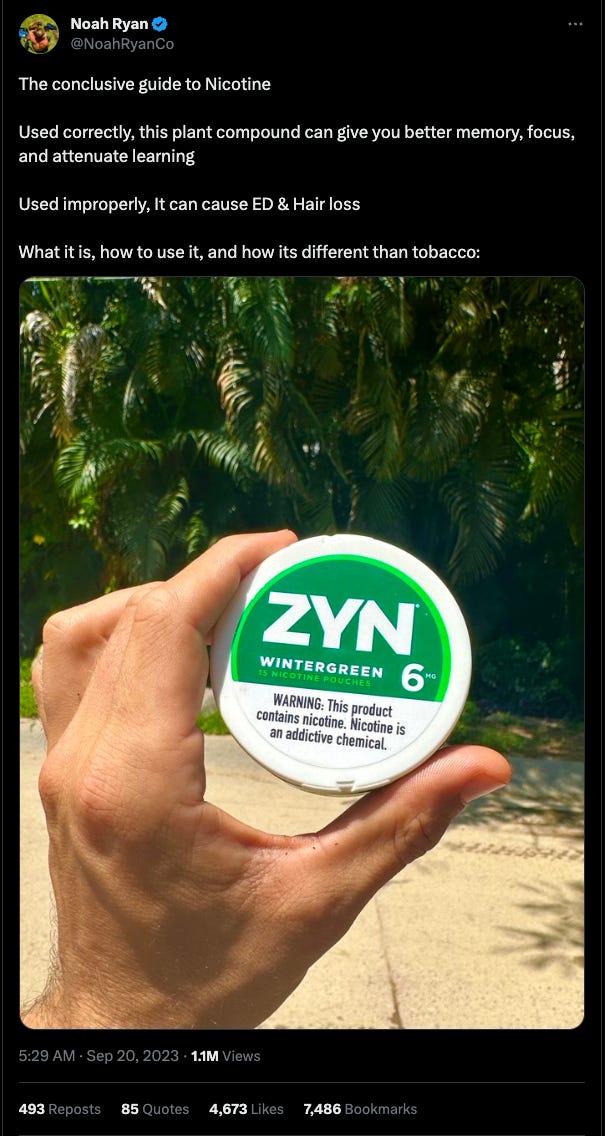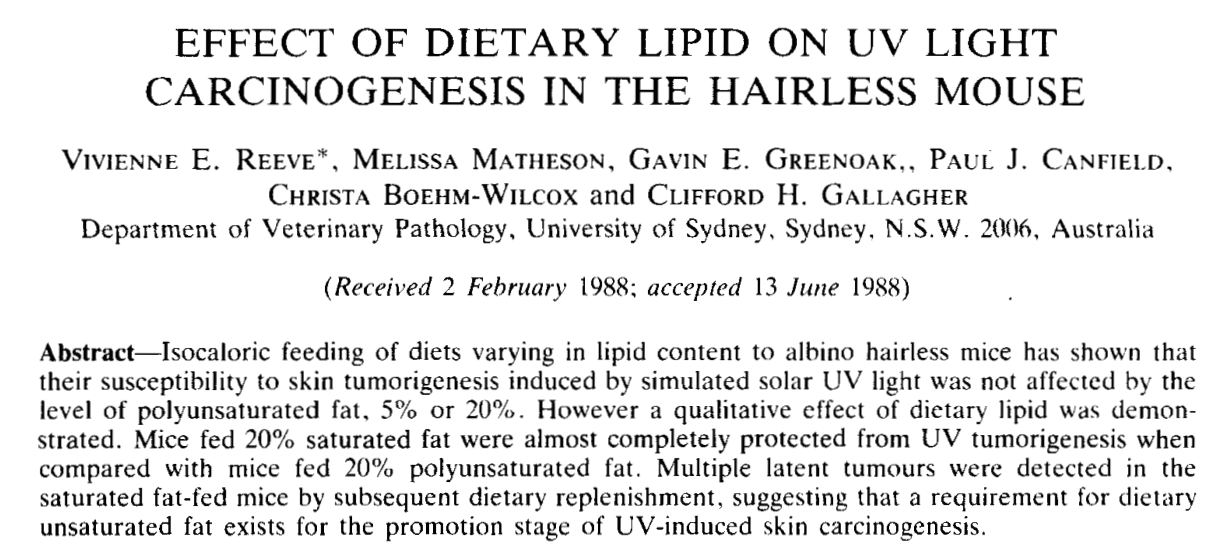WIL Weekly 5-Point Review #15
Exercise, Fasting, Seed oils & Sunburn and more...
This is my free weekly newsletter covering 5 interesting points from the week. Subscribe if you’d like to get it in your inbox each week!
1. New Video & Blue Zone BS
While I only talked about Okinawa in my new video, it’s one of many of the called Blue Zones - areas where people live particularly long. The Blue Zones are often used to support the plant-based narrative as it’s often claimed that Blue Zone diets barely contain any meat. I thought I’d share an email I got from a viewer a viewer who lives in another one of the Blue Zones: Sardinia
First of all, big fan of your work.
Second, after reading your Blue Zone commentary I want to tell you how big this bullshit river probably goes. As a Sardinian I can tell you they've been lying about our diet as well. All English sources will give you is "lots of vegetables, fruits, nuts, legumes, some cheese and little meat and fish". Again nothing is further from the truth here. Sardinians eat the most meat out of all Italy (where meat consumption is sadly declining, carb and PUFA consuption increasing, and obesity is now prevalent). They also consume obscene amounts of cheese, however despite being an island less fish than you'd think. This is because the coastlines have always been raided throughout history and the Sardinian people have mainly been living as pastoralists in the mountains. This begs the question how much bullshit they spread about the OTHER Blue Zones that we have no clue about.
2. Why you need to exercise even if you’re fasting
Training state and skeletal muscle autophagy in response to 36 h of fasting illustrates one of the many reasons you shouldn’t just pick fasting or exercise. If you can, do both for maximum benefit. Simply put, the data suggests that people who regularly exercise experienced more autophagy during a 36 hour fast. Autophagy is often described as the body’s ‘cleaning up’ process because old cell parts are recycled and reused. This is thought to serve to reverse some of the damage done by the aging process.
3. Thread on Nicotine
Noah Ryan has written a very thorough thread on Nicotine - how it works, dosing, how Nicotine and Tobacco are not the same et cetera. It’s an interesting read.
The thing about caffeine is it’s not really worth it at all to drink it in the afternoon for me. Not just because the long half-life of caffeine means my sleep will be disturbed, but an afternoon coffee just doesn’t put me in the zone like the morning coffee does.
Then, there’s nicotine. It gives me a boost in mood and focus in the afternoon without making me more anxious like caffeine does as long as I take a little bit at a time. I have a small corner of a 2mg nicotine gum at a time. If you take too much at once, you’re liable to get nauseous and a bit anxious. However, it’s pretty easy to avoid this. If you start to notice a hint of nausea or feeling uneasy, just take the thing out of your mouth.
Nicotine is certainly addictive, so be warned. If you use it habitually, you will experience withdrawal effects so if you want to try it, it’s best to stick to the lowest dose necessary for a cognitive boost. The current evidence does not suggest that nicotine in itself induces cancer.(S)
4. The Seed Oils cause Sunburn Theory
If you dig around nutrition twitter long enough, you’ll eventually come across this idea that seed oils (PUFA from canola, rapeseed, sunflower, soybean oil etc) cause sunburn. Basically the idea works like this:
-Linoleic acid is a polyunsaturated fatty acid that is very susceptible to oxidation
-You eat linoleic acid containing seed oils (canola, rapeseed, soybean etc)
-They accumulate in your cell membranes
-The cell membranes in your skin also accumulate the linoleic acid
-Your skin now oxidizes much more easily and more susceptible to sunburn
This idea gets a lot of pushback as being some fringe idea that only deranged anti-seed oil crusaders would believe.
However while the idea is mostly supported by the many people who claim they can withstand the sun much longer after cutting out seed oils, there are a few studies that support the idea.
This study looking at UV light exposure to hairless micefound that “mice fed 20% saturated fat were almost completely protected from UV tumorigensis when compared with mice fed 20% polyunsaturated fat.”
An epidemiological study (which is of course has its limitations) looking at types of fat intake and risk of skin cancer in US adults found that omega-6 and omega-3 fat intake was associated with risk of basal cell carcinoma and only omega-6 was associated with squamous cell carcinoma and melanoma.
Another study titled Melanoma and Dietary Lipids actually looked at the amount of linoleic acid in people’s adipose tissue and found that “the percentage of polyunsaturated fatty acids was found to be higher in the melanoma patients than in the controls.”
5. Be careful when you look too hard for memories - You might just make them
TheCut.com has an interesting story titled Remembering Childhood Trauma That Never Happened. In 1998 in Florida, residents of a small town alleged that they had discovered a secret satanic cult being run out of the local preschool.
Evidence for this secret cult of child molesters came from none other than the children themselves—a decade later. Many of these remembered acts were so hideous, so barbaric, that the victims had buried the memories deep within their psyche, uncovering them only under intensive hypnosis. After hours of these sessions, psychologists and law enforcement officers were able to retrieve long-buried memories of bizarre ceremonies, torture, and the worst sexual violations imaginable. ….The more psychologists and law enforcement dug down, the more instances of ritual abuse they turned up. Pretty soon, they had collected more than 60 testimonies of horrendous torture and sexual deviance.
The owner of the preschool was arrested. During a hypnosis session to retrieve the repressed memories, one 12 year old alleged that people in hoods forced her to drink a snake’s blood. After some time, the 12 year old Kristin Erickson didn’t feel like what she said had the concreteness of truth, so she told the psychologist that she thought she actually made that up. The psychologist told her: “No, that’s just what it feels like. It really happened.”
Over 15 years later, Erickson suddenly recalled her childhood hypnosis therapy and still felt uneasy about it. She looked up Alan Tesson, one of the psychologists involved in the Florida case, and learned that 10 years after the investigations, he had been sued for implanting false memories in one of his patients.
Erickson’s case had occurred in the middle of the “Satanic Panic” of the 1980s and ’90s. A 1992 FBI report noted during this period, “hundreds of victims alleging that thousands of offenders are abusing and even murdering tens of thousands of people as part of organized satanic cults—and there is little or no corroborative evidence.”
Someone on my Substack recommended this paper Rich false memories of autobiographical events can be reversed.
“the process of building up the false memories in our study was relatively simple”
It illustrates just how fickle and malleable our memory is. One problem with memory is the phenomenon of false memories where when an interviewer or therapist is questioning a person in order to find a memory, they may in fact create one. As they note, “multiple studies succeeded in inducing false memories in interview settings.”
Until he was 14, Jean Piaget vividly recollected an attempt to kidnap him at a young age: “I was held in by the strap fastened round me while my nurse bravely tried to stand between me and the thief. She received various scratches, and I can still see vaguely those on her face. Then a crowd gathered, a policeman with a short cloak and a white baton came up and the man took to his heels. I can still see the whole scene, and can even place it near the tube station.” One year later, however, Piaget’s former nurse confessed that she had made up the whole story.
The most impressive evidence for this comes from studies implanting false memories of entire events that never happened in children (14–17) as well as adults (18–28). A recent “mega-analysis” (29) of several studies on false memories concluded that 30% of all 423 participants had developed false memories; another 23% developed false beliefs only (i.e., believed that the suggested, fictitious event had actually taken place without, however, experiencing recollections), and 47% developed neither a false memory nor belief. In other words, about half of the participants could be persuaded to incorporate an event into their autobiographical memory that never happened.
In the paper, it took just three interviews to create a false memory.
Over three repeated interviews, participants developed false memories (measured by state-of-the-art coding) of the suggested events under minimally suggestive conditions (27%) and even more so using massive suggestion (56%).
The good news is that as the title suggests, the false memories can also be reversed relatively easily.







Stay away from nicotine. It is like playing too close to the fire. Whatever benefits aren't enough to counter the habit forming and addictive sides. I was on swedish snus, similar to zyn for 10 years and got of it 6 months ago. It was tough.
I remember looking up various studies about seed oils and sunburning because I likewise kept hearing tons of anecdotes _and_ experienced it myself, so was wondering if any research had been done.
It's honestly one of my more favorite reasons to not eat seed oils, as I love being in the sun and practically never ever getting any sunburn anymore is great, when coming from a place of burning really rapidly and _really_ severely.. Though my diet in my childhood was also very, very processed and filled with seed oils.